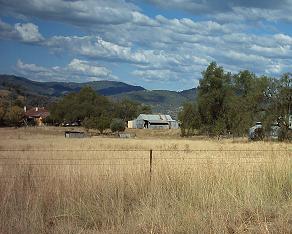Eligible public or private organisations will be able to apply for infrastructure funding to establish new or enhanced regional cancer centres.
In the 2009-10 Budget, the Rudd Government committed $560 million from the Health and Hospitals Fund (HHF) over five years to establish a network of around ten best-practice regional cancer centres and associated accommodation facilities.
The regional cancer centres will improve access and support for cancer patients in rural and regional Australia, and help close the gap in cancer outcomes between the city and the country.
The regional cancer centres are part of the Government’s plan to build a world-class cancer care system in Australia – enabling people with cancer who live in rural and regional areas to deal more effectively with cancer treatment challenges, and live longer with a better quality of life.
Organisations wishing to apply for funding should obtain the Application Guidelines, Funding Application form, and supporting documentation by registering at the Department of Health and Ageing’s website: www.health.gov.au/tenders.
The Application Guidelines incorporate the Regional Cancer Centres Guiding Principles, which were finalised following a public consultation process that took place in September and October.
As with all HHF funding rounds, the independent HHF Advisory Board will assess the applications for regional cancer centre funding, and provide advice to the Minister for Health and Ageing.
While Australia has better overall cancer survival rates, there is still unacceptable variation for some people, depending on the type of cancer, a person’s socioeconomic status or where they live.
It is of great concern that for the 30% of Australians living in rural and remote areas, outcomes are worse than for people living in the city.
Studies have shown that survival tends to be lower for people living in rural and remote areas compared with people living in metropolitan areas, especially for lung, cervical and prostate cancer.
With some cancers, patients from rural areas are up to three times more likely to die within five years of diagnosis than their urban counterparts.
The closing date for applications is Friday, 8 January 2010.
The Rudd Government looks forward to working collaboratively with the states and territories, private providers, non-government organisations, the cancer workforce, patients, their families and carers to realise better cancer care outcomes for people living in rural and remote areas.
The recent Federal Budget invested a record $2 billion to build a world-class cancer care system in Australia, including:
- Two Integrated Cancer Centres to provide state-of-the-art cancer treatment combined with cutting edge research, focused especially on treating rare and complex cancers which need national centres to provide appropriate experience for quality care. The new Lifehouse Sydney Cancer Centre at the Royal Prince Alfred Hospital in Sydney will receive $100 million, and the Parkville Comprehensive Cancer Centre in Melbourne will receive $426.1 million. The Government will also provide $70 million to expand the Garvan St Vincent’s Cancer Centre in Sydney to enhance its world-class research capacity.
- $560 million to build a network of up to ten best-practice regional cancer centres and associated accommodation centres, to help close the gap in outcomes for cancer patients in rural and regional Australia. The centres will be selected following a national tender process open to both the public and private sectors – and may establish new – or enhance existing – regional centres. This will include a centre in Canberra to service the local community and south-east NSW.
- $120 million to replace BreastScreen Australia’s outdated equipment with state-of-the-art digital mammography equipment. This will replace 205 existing analogue machines around Australia.
• $12 million to the McGrath Foundation for recruitment, training and placement of 44 breast cancer nurses across Australia.




